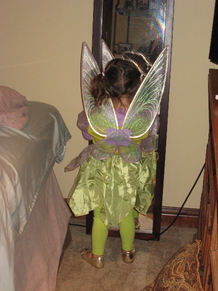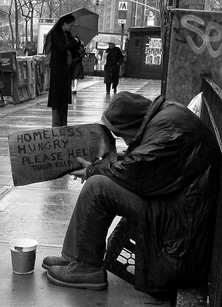 Miss E at Halloween/Dad “Throw the Toys at the Ceiling” is a game devised by my four-year-old granddaughter. It is a game for two to be played in the bedroom. When the toys hit the ceiling (unless she is throwing them and they don’t), they must land on her queen-sized bed (unless she is throwing them and they don’t.) I stipulate only stuffed animals can play with us to minimize damage on the field of play.
This is the first game Miss E wants to play when I arrive two Saturdays ago. Apparently this game had been a hit the first time we played it before she and her dad began travelling. A lot of time had passed between that time and this.
This stay with my son and granddaughter was short, a trip down on Saturday morning, returning Sunday afternoon. But enough child time to play her games and follow her instructions while issuing none.
One big joy of being with Miss E, even for a short time, is a chance for me to behold my own small self with the eyes of love. Experiencing Miss E as the center of attention reminds me of a poem I wrote about my own childhood. In “Circling the Wagons,” I expressed sadness that when I looked into the mirror, I saw my mother’s face and not my own.
Parents at their best make a world in which their children feel they matter and don’t just exist at their mother or father’s convenience. When E speaks, her daddy hears her. He allows her to interpret her own experiences. And I’m in awe of how he helps her say what she needs before she cries or whines. He is giving her the tools I am still learning to give myself, that space between feeling and reacting.
Near noon, Miss E, her daddy and I joined a group of her school chums for a birthday party in a pizza parlor. Though she has her own pizza, she doesn’t eat it. Instead she picks olives and tomatoes from my salad, then eyes the foil-wrapped chocolates on the table, surreptitiously unwrapping one though Daddy said not to. As the foil peels from the second chocolate, she leans toward me and whispers, “Don’t tell Daddy.” Part of me wants to say, “You know what Daddy said,” but it feels like a gift to be an accomplice to this little person.
After the party, I run beside her in the rain, grasping her hand to cross streets to a theater where my son deposits us to see “The Lorax” with other partygoers, parents, and grandparents. This time off from daddy duties is my gift to him, an hour or so to watch basketball on a big screen and drink beer with his friends.
As the theater darkens and I notice that my granddaughter is wearing a barrette with a feather that sparkles in the dark, I get what Margaret Mead meant when she said, “Everyone needs to have access both to grandparents and grandchildren in order to be a full human being.”
During my time with Miss E, it wasn’t all games. We watched Barbie in Mermaids 2. We watched it twice. Each time we chose which mermaids we were. And while we watched it, she instructed me to put together one of her jigsaw puzzles for ages 4+, while elbows on the table next to me, she colored pictures pink and purple. These she said would be gifts for a friend whose birthday party was on Sunday. Her dad and I praised her color choices and assured her that the birthday girl would adore these pink and purple pictures.
The next day after a reprise of Mermaids 2, we have time to go into her bedroom and put all the stuffed toys on her bed. Holding the tallest doll, she is Mommy, and I with the stuffed Santa, am one of many daughters. Apparently, all the children have colds except me, so I must do as Mommy tells me: help Mommy give medicine and carry my sisters while they recover. Miss E gives orders in her high little girl voice, and I give the Santa doll a high little girl voice too, although sometimes I whine because it seems to me that the other daughters are getting more attention.
When I am with this little girl, I touch the deepest part of my being. As part of the love that surrounds her and as I play with her, I simply allow things to unfold and pretend that I am that child who is flowering.
 Black Hole / fotologic (Jon Nicholls) Nothing matters more to me now than it used to. When first I proclaimed “NOTHING MATTERS” it was in my newspaper column, “Alison’s Wonderland,” my sophomore year at Occidental College. I went on at some length and attributed my disdain for conventional wisdom to what I’d learned from a cursory reading of Bertrand Russell and existentialists such as Sartre and Heidegger.
Now when I say nothing matters, I’m saying that nothing by which I defined myself in the past needs to limit me today. I am free to explore and create a new narrative unhindered by self-limiting stories.
In The World is Made of Stories, Buddhist David R. Loy talks about a constricting and self-limiting understanding of the self based on the stories we tell about ourselves, over and over. These are the stories we have been telling ourselves and others about who we are and what our world is like. They are the way we understand our own lives. We live in these stories as fish live in water.
Beyond stories that limit our identity is another part of ourselves, a still-unstoried self that “preserves the possibility of novelty, of doing and becoming something different,” Loy says. He calls this un-narrated part of us “No-thing-ness.” Nothingness. Nothing solid. This is the no-thing-ness that matters to me now.
Given this new concept of the nothing that matters, I can skip quickly through the past that no longer need define me. In the late ‘50s, the “nothing” that mattered to a sophomore in a private, Presbyterian liberal arts college where chapel was compulsory was “no school rules matter. But, as I break them, please notice.” I am no longer that morose, skinny, brunette in a black leotard, eager to define herself by her lack of beliefs. Nor am I the young mother of two little boys in her twenties asking god to turn her into a believing Jew, nor the middle-aged woman hoping for a lift through total baptismal immersion and calling herself a Christian. Iteration after iteration brings me to now, a Unitarian Universalist without dogma, as well as a budding meditator for whom the “no-thing-ness” promises a chance to broaden my narrative.
Rumi’s poem “The Worm’s Waking” encourages me to “wake up” and slow down the story telling so as to make room for this broader narrative.
THE WORM'S WAKING
This is how a human being can change:
there’s a worm addicted to eating
grape leaves.
Suddenly he wakes up,
call it grace, whatever, something
wakes him, and he’s no longer
a worm.
He’s the entire vineyard,
and the orchard too, the fruit, the trunks,
a growing wisdom and joy
that doesn’t need
to devour.
Through meditation and learning from Buddhist teachings, I am making space to be cast in new narratives, especially those that allow space for living loving-kindness. Through loving-kindness, I realize how much I have in common with others. Like me, every sentient being wants fulfillment and to escape suffering.
Living loving-kindness means practicing empathy, being willing to see the world from another point of view. It’s wishing others well. It is friendliness, consideration, kindness, and generosity. It is the basis for compassion, for shared joy. It’s my inherent potential. To wish another well is to wish that they be in a state of experiencing loving-kindness. Moreover, it is an attitude rather than just a feeling.
Freeing myself from the fixed and limited “I,” in my habitual stories, I am beginning to give myself space to be a kinder, more loving person. With that intention perhaps I can answer a question David R. Loy poses: “What stories do I want to live? The non-dual way to say this is “What stories want to come to life through me?”
 Paper Cranes/Tonx I’m confused about the Buddha’s Eightfold Path. Being unenlightened, I’m uncomfortable confused. If the path is just the path without eight folds, no problem. But the numbers bewilder me. I can’t cope with an eightfold path plus five precepts and four noble truths. Numbers became an issue about the same time I was being admonished to color inside the lines of my first coloring book. It was then that I slipped into conflating numbers and colors. By the time I met school arithmetic, addition and subtraction had become a Technicolor smear. Eight was yellow, five red, four blue and so on. An additional stumbling block on the math path was a remedial high school math teacher whose passion wasn’t us laggards. To coach the tennis team, he was required to teach us math. Though the task filled him with contempt, it was a playful sort of don’t-give-a-damn. This, coupled with our being the last class of the academic day, explained why Mr. Don Hahn stood on his hands and instructed upside down in front of the chalkboard dressed in white tennis shorts and a polo shirt. Clearly, I was too distracted to grasp the complexity of numbers from so near the floor. Now, older and no longer challenged by remedial math classes or staying inside the lines of coloring books, I am fast tracking to enlightenment. I sense an urgency to awaken before karma claims me and I’m back again as a betula pendula*. To hurry the enlightenment process, I enroll in an “Intermediate” Buddhist meditation class after only five months of meditation. And while smart enough to keep up; not so swift when faced with numbers (one eightfold path, five precepts and four noble truths). I had thought my problem with numbers was over but then one of the soft-spoken shikshaks* divides the eightfold path into three and then divides each three into two. My calculations total six. Plus the five red precepts and four blue noble truths and we are up to a muddy brown 15. That’s when frustration causes me to complain that I can’t hear anyone and would everyone please speak louder. In a different meditation session, this one at the Zen Center, I envision solutions to the dilemma of eight folds as I sit, eyes softly downcast, surveying the coming and going of thought as if through a train-station window. Coming in from the left, going out to the right. Suddenly, the folds in the eightfold path appear to my mind’s eye as folds in small sheets of colored paper, the crafting one might find in origami. Fold, fold, fold, into the tiniest of creations: a crane, a horse, a giraffe, an infinitesimal circle of intricate folds. I like this origami image. As I understand it, the Buddha’s eightfold path isn’t meant to take me somewhere other than where I am in any moment. Eventually, I look up the Eightfold Path to Happiness as explained to kids, and I decide to be okay with numbers. In child mind, I imagine learning by rote, the way we did when we learned multiplication tables. This kind of learning keeps colors out of my equations. THE EIGHTFOLD PATH TO HAPPINESS*** 1. Right Views: To keep ourselves free of prejudice and superstition, and to see the true nature of life. 2. Right Thoughts: To turn our minds away from the violence and hatred in this world. 3. Right Speech: To refrain from harmful talk and to use our words wisely. 4. Right Conduct: To see that our deeds come from peace and goodwill. To grow every day in the Buddha's Teachings. 5. Right Livelihood: To try to earn our living in such a way that we avoid evil karma. 6. Right Energy: To use our energies to overcome ignorance and destructive desires. 7. Right Mindfulness: To cherish a good mind, for all that we think and do have their roots in the mind. 8. Right Meditation: To study the Teachings of the Buddha and to practice them to the best of our abilities. And though the Buddha taught more than 2,500 years ago and learning to awaken involves dividing concepts into more numbers than I’m comfortable with, the practice of meditation is reshaping my life, folding me into a lovingness I have never known. Color me peaceful. *Latin for silver birch tree
**Sanskrit for teacher
***From the ManitobaBuddhist Temple
 rock bottom / Lee Nachtigal He was tall, thin and wore a navy-blue wool cap that covered his ears. His scruffy one-legged companion was in a wheelchair, and when I came in to Starbucks at the Fillmore Center at 6 a.m., they were gathering their belongings, bags, and backpacks from the table for the handicapped. The tall younger man tottered toward the waste receptacle, sagging forward on bent knees. Behind the counter, Rob was watchful.
Suddenly, the man’s arms swept out to his sides and loudly he proclaimed, “We have come in out of darkness. We weren’t until we came in and your kindness gave birth to us.” And he went on, more to Rob than to me, “You can see this, can’t you? We were wandering in darkness and you let us come in.” And again, “Now we are born.”
I looked at Rob. His face mirrored the amazement on my own. To Rob I murmured, “I don’t do drugs, but if I did, that is the drug I want.” And we laughed in amazement.
On the sidewalk in the rain, the companion in the wheelchair waited impatiently. We could not hear him, but the look on his face led Rob to tell the poet that his friend was waiting for him.
Meanwhile, the poet was trying to pull a plastic newspaper sleeve over his head to keep his hat dry before joining his companion in the downpour. The plastic kept splitting, never opening wide enough to fit over the cap, and soon it was just torn and rumpled plastic sitting on top of his hat.
I have seen many scruffy wanderers warming themselves in this Starbucks, their belongings in plastic or paper bags, or they sit silently wrapped in soiled blankets. Not all of them are suddenly eloquent. Some, like Derrick, whose name we know, never speak but drum on the table to music we don’t hear or wave their fingers conducting the unseen. Some curse and curse until a barista asks them to leave.
Each morning into this café comes a parade of vagrants whom the light and warmth welcome. On this particular morning, the poet with plastic on his hat and his companion in the wheelchair put me in mind of lines from Jalaluddin Rumi’s poem, “The Guest House.”
This being human is a guest house
Every morning a new arrival.
A joy, a depression, a meanness,
some momentary awareness comes
as an unexpected visitor....
The dark thought, the shame, the malice,
meet them at the door laughing,
and invite them in.
Be grateful for whoever comes,
because each has been sent
as a guide from beyond.
This is not the whole poem. I skipped to the parts that connect the “guests at Starbucks” with the “guests” that frequently gust through me, the sometimes unwelcome, often uninvited thoughts or impulses and uncomfortable energies that call me their home. My own vagrants for whom I provide the light that gives them birth.
I’m not always delighted by the aspects of myself that seek to be acknowledged, but meditation teacher Pema Chodron instructs that one must cultivate unconditional friendliness and stick with oneself through thick and thin. This, of course, is easier when what I see is pleasant and acceptable. It is much more difficult to stay present and open and say “Welcome, come in” to the dark, the shameful, the malicious pieces of myself I have ignored or denied.
But I am committed to being a friend to both the acceptable and the painful pieces of me. Meditation instructions to meet each piece with gentleness make tending and befriending easier. So as I learn to stay open and present to whatever aspects of myself present themselves, I welcome all who seek the light of my consciousness. I invite them into my inner silence.
I love that meditation is a constant flow of saying yes to whatever comes to mind. When thoughts come by, I can note them gently and see them waft past. When strong and painful feelings land with a thud, I can hold them and bathe them in a stream of “yes, yes, yes.”
In some respects, being a meditating human is like being a welcoming café that opens early and is warm. All the guests who come may not be so desirable, but closed door or mind precludes so much.
Catholic mystic, Thomas Merton wrote: “Our job is to love others without stopping to inquire whether or not they are worthy. That is not our business and, in fact, it is nobody's business. What we are asked to do is to love, and this love itself will render both ourselves and our neighbors worthy.”
|




 RSS Feed
RSS Feed